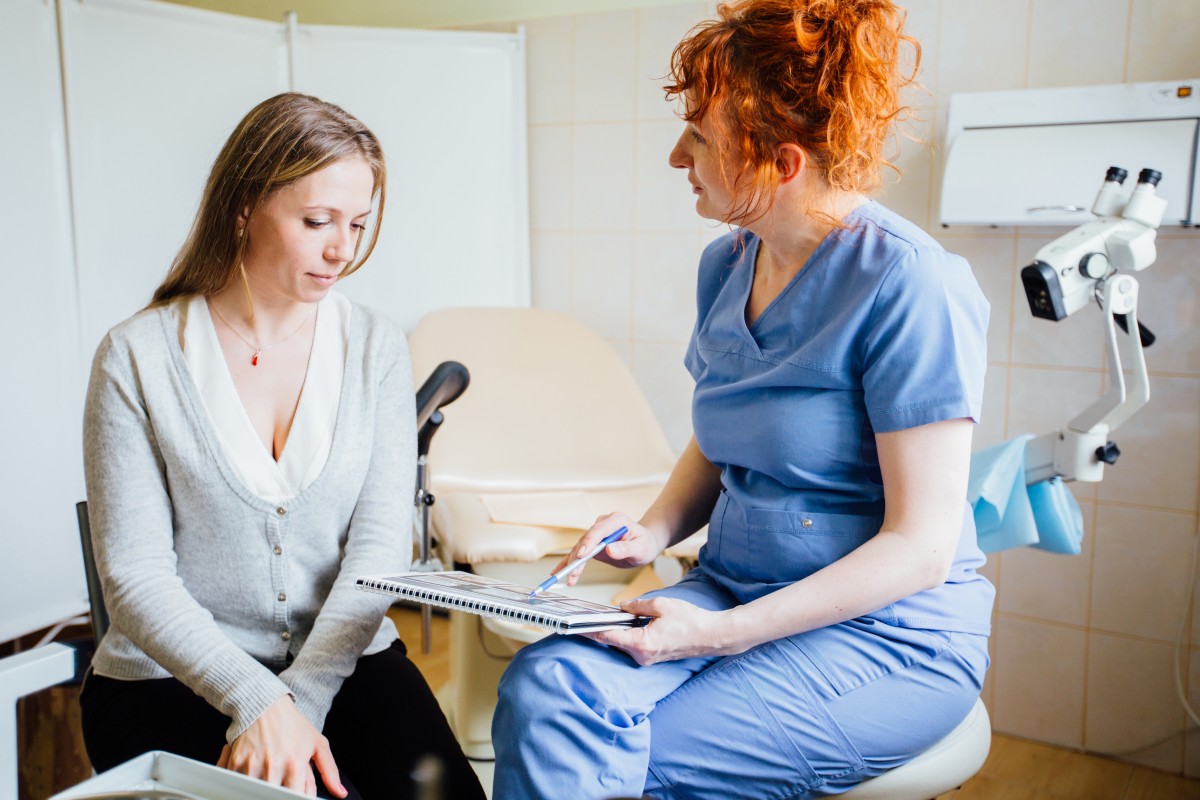Using Patient Education Videos to Support Preventive Care Strategies
As a healthcare provider, you know prevention saves lives. From routine screenings and lifestyle counseling to vaccinations and early detection,...
6 min read
Robert McDermott Jun 5, 2025 1:00:01 PM

As a healthcare provider, you know prevention saves lives. From routine screenings and lifestyle counseling to vaccinations and early detection, preventive care is the foundation of better long-term health outcomes. However, less than 8% of adults receive all the preventive services recommended to them.
That number is a symptom of a larger issue. While access to care plays a role, the real challenge often lies in engagement. Too many patients leave the exam room confused, overwhelmed, or unconvinced of the importance of preventive care. The good news is that patient education videos can help turn things around and encourage patients to get the preventive care they need to live a healthy and happy lifestyle.
Quick Links
Preventive care is one of the most powerful tools in healthcare. Despite its well-documented benefits, preventive care remains significantly underutilized across the U.S., largely due to gaps in patient engagement.
Engaged patients are proactive patients. When individuals are fully informed and feel empowered to manage their health, they’re more likely to schedule regular checkups, comply with screening recommendations, and take steps to maintain wellness. But when patients lack awareness or understanding about preventive services, or don’t feel connected to their provider’s recommendations, they’re far less likely to participate in routine care.
Many patients don’t realize how essential preventive visits are if they “feel fine.” Others may misunderstand the purpose of tests like mammograms, colonoscopies, or blood pressure screenings, viewing them as optional rather than necessary. Some may even skip appointments due to worries or previous negative experiences–barriers that can often be addressed through more personalized and empathetic communication.
This is where better patient engagement comes in.
Preventive care relies on early and ongoing participation, not just reactive treatment. But traditional communication methods, such as printed brochures or rushed verbal instructions, often fall short. Patients need information that’s accessible, clear, and meaningful to them. They also need opportunities to digest information at their own pace and see how recommendations fit into their everyday lives.
More engaged patients are not only more likely to attend preventive visits–they also tend to report higher satisfaction, better health outcomes, and lower long-term healthcare costs. For providers and healthcare organizations, that means stronger relationships, better care continuity, and a more efficient use of resources.
To bridge the gap between preventive care recommendations and actual patient behavior, practices must rethink how they educate and connect with patients. That means shifting from one-size-fits-all instruction to a more tailored, technology-enabled approach.
When implemented thoughtfully, patient education videos can increase understanding, reduce anxiety, and encourage patients to take preventive steps with confidence. Here’s why they’re so effective:
Take, for instance, a dental practice that has patients who make appointments for cleanings once in a blue moon, rather than every 6 months as recommended, despite sending reminders through emails and phone calls. Maybe the disconnect is in the way the information is provided. So, this dental practice might instead send short informational videos explaining the importance of regular dental cleaning, what to expect with routine cleanings, common concerns among patients, and how they’re addressed.
These videos make it easy for patients to receive information that’s important for their health. But the way the information is delivered isn’t always aligned with the patient’s learning styles. With videos, practices can adapt to cater to the needs of their patients, and in turn, see improved engagement.

Patient education videos are especially powerful when used to explain preventive care topics that may be unfamiliar, overlooked, or difficult to discuss in a short visit. Videos offer a clear, accessible way to introduce these topics, build understanding, and encourage follow-through.
Routine screenings are essential for detecting potential health issues early, before symptoms appear. However, patients may not always understand why these tests are necessary or how often they should be scheduled. Patient education videos can explain the value of early detection in clear, relatable terms, helping patients feel more confident and motivated to stay on schedule with recommended exams.
From childhood vaccines to seasonal flu shots and shingles vaccines for older adults, immunization hesitancy often stems from misinformation or fear. Short, informative videos can:
Educational videos are an effective tool to support lifestyle changes that prevent chronic conditions like diabetes, hypertension, and heart disease. Topics might include:
These videos often serve as a foundation for behavior change and can be paired with follow-up coaching or support programs.
Preventive dental care is just as critical as medical care, but many patients overlook it until issues arise. Videos can explain:
Using videos to deliver clear, approachable information across these topics helps patients better understand the “why” behind preventive care as well as the steps they can take to protect their long-term health. When paired with consistent messaging from your practice, these resources become a powerful driver of engagement and action.

To truly support your preventive care efforts, patient education videos must be thoughtfully crafted or selected with clarity, accessibility, and engagement in mind. Whether you're creating custom content or choosing from a video library, here are the best practices to follow:
Aim for videos that are 2 to 3 minutes long, focusing on a single topic or question at a time. Patients are more likely to watch short videos to completion and retain the information. If a topic requires more time, consider breaking it into a short series.
Avoid medical jargon or overly technical explanations. Speak in plain, conversational language that’s easy to follow, even for patients with limited health literacy. The goal is to make the information approachable and actionable.
Animations, illustrations, and real-life demonstrations can help patients visualize procedures, anatomy, or step-by-step instructions. Visual aids enhance understanding and reduce anxiety, especially when covering complex or unfamiliar topics.
Videos should reflect the diversity of your patient population, both in language and representation. Offer videos in multiple languages and include closed captions to support patients with hearing impairments or limited English proficiency.
The narrator’s voice, pacing, and delivery matter. Choose or produce videos with a calm, reassuring tone that encourages trust and openness. This is especially important for sensitive or anxiety-inducing topics like screenings or vaccinations.
Each video should end with a simple, direct next step–whether that’s scheduling an appointment, calling your office, or following specific home care instructions. Reinforcing action increases the likelihood of follow-through.
Patients should be able to watch videos before or after appointments, from their phone, tablet, or desktop. Use tools that allow you to send video links via text or email, or embed them in your patient portal or website.
While videos are a powerful tool, they’re even more effective when paired with other formats like written handouts, FAQs, or a quick follow-up message from your team. Use them to supplement, not replace, provider-patient communication.
At its core, preventive care is about helping patients stay healthier, longer. But for prevention to work, patients need clarity, confidence, and connection. Fortunately, patient education videos not only provide necessary information, they also help strengthen engagement in care.
By delivering information in a way that is easy to understand, culturally relevant, and accessible anytime, videos help patients feel more informed and empowered. Whether it's preparing for a routine screening, understanding the importance of daily brushing and flossing, or learning how to manage blood pressure at home, video-based education helps patients move from passive recipients to proactive partners in their health.
When patient education is done right, the entire experience improves. Patients feel more supported, communication is more efficient, and providers spend less time repeating explanations and more time building relationships. It’s a win for your practice and your patients.
iCoreAcademy by iCoreConnect makes it easy to bring this level of patient-centered education to your medical or dental practice. With an expansive library of over 100 professionally narrated videos in both English and Spanish, iCoreAcademy helps you simplify communication, reinforce preventive care strategies, and boost treatment plan adherence–all while enhancing the patient experience.
Want to see how it works? Book a demo of iCoreAcademy today and explore how smarter patient education can make a lasting impact on your care delivery.

As a healthcare provider, you know prevention saves lives. From routine screenings and lifestyle counseling to vaccinations and early detection,...

There’s no denying that the AI boom is here. The American Medical Association reports that 66% of physicians are currently using artificial...

If only managing your practice’s revenue cycle came with a crystal ball. You could spot claim denials before they happen, predict when patients might...

In the last few years, deaths related to chronic conditions actually went up, despite advancements in medicine that help treat those conditions....

If making decisions were simple, we wouldn’t have countless books, seminars, webinars, or conferences with experts weighing in about how to improve...

Wondering how to make a home repair? Car repair? Get a good workout? Learn a language? There’s a video for that. Increasingly, in classrooms across...